Abstract
1. Lysergic acid diethylamide (LSD) and the 5-hydroxytryptamine (5-HT) precursor, 5-hydroxytryptophan produced similar functional effects in rat spinal cord and brain to the 5-hydroxytryptamine precursor 5-hydroxytryptophan, which indicates that LSD stimulates central 5-HT receptors.
2. By means of combined histochemical and biochemical techniques it was found that LSD reduced the turnover rate of brain and spinal cord 5-HT, studied after inhibition of the tryptophan hydroxylase by α-propyldopacetamide. The turnover of brain noradrenaline but not dopamine was somewhat accelerated.
3. The functional and chemical effects by LSD were related to dose and to time. They were not observed after the LSD analogues 2-bromo-LSD and methylsergide.
4. The retardation of the 5-HT turnover by LSD may be due to negative feed-back mechanisms evoked by direct stimulation of the central 5-HT receptors.
Full text
PDF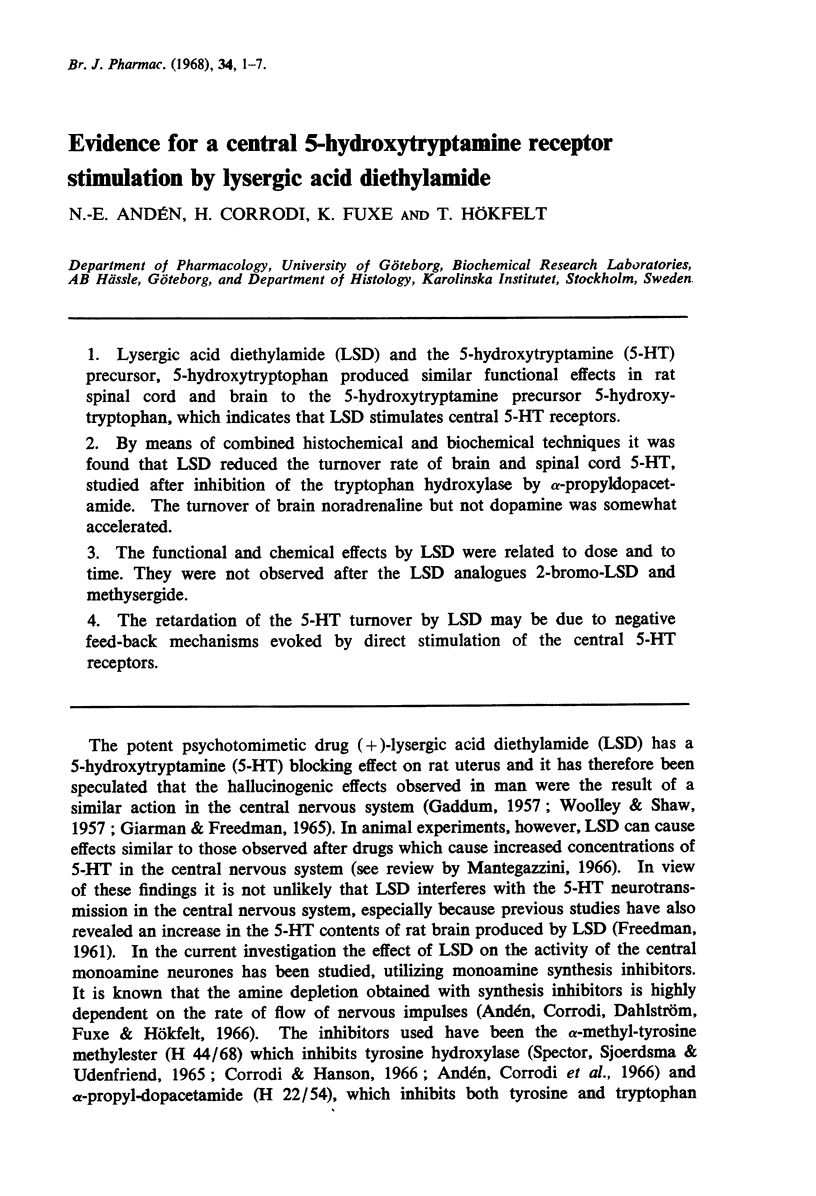
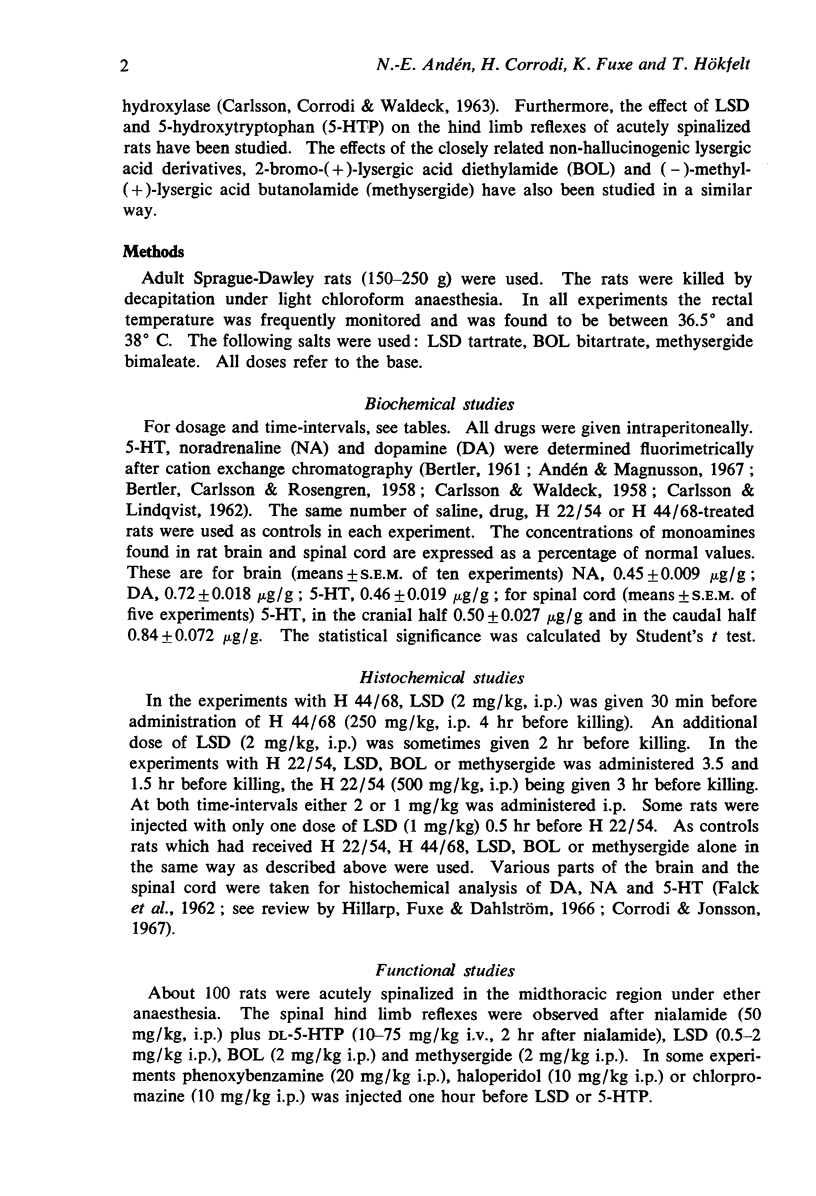
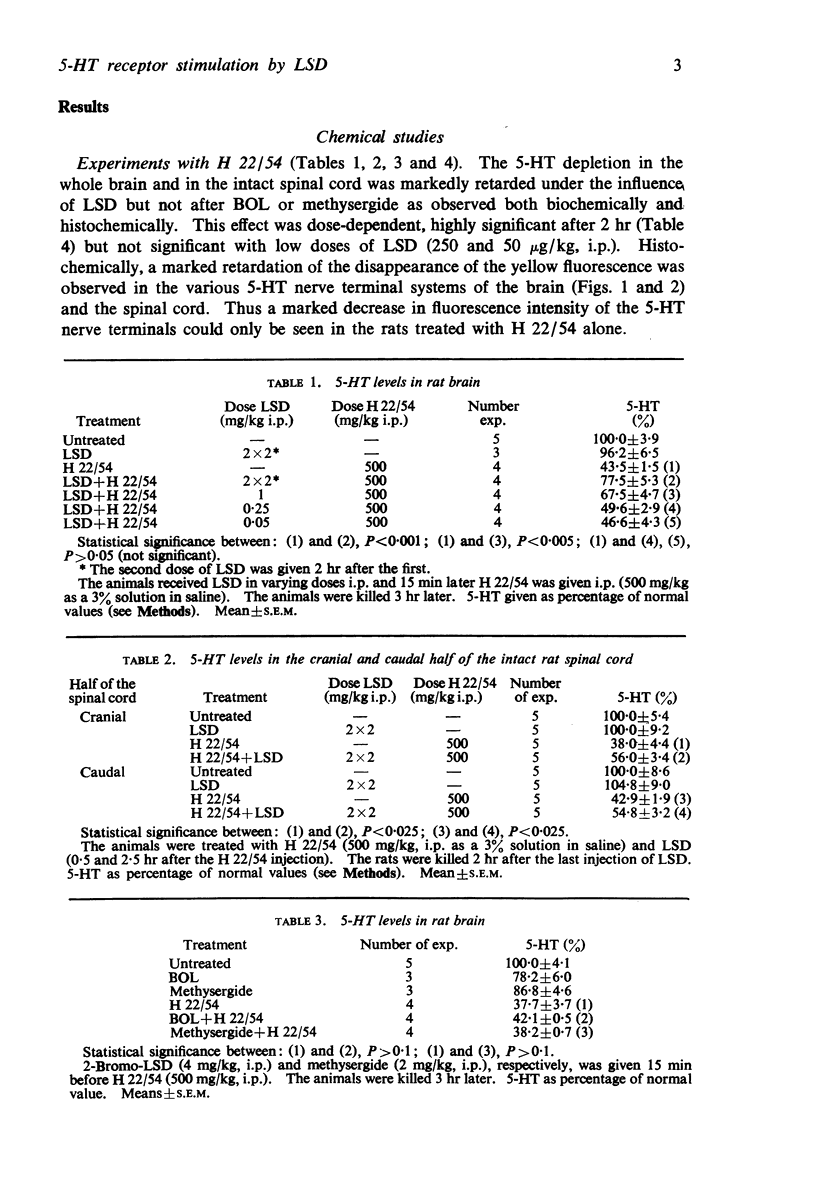
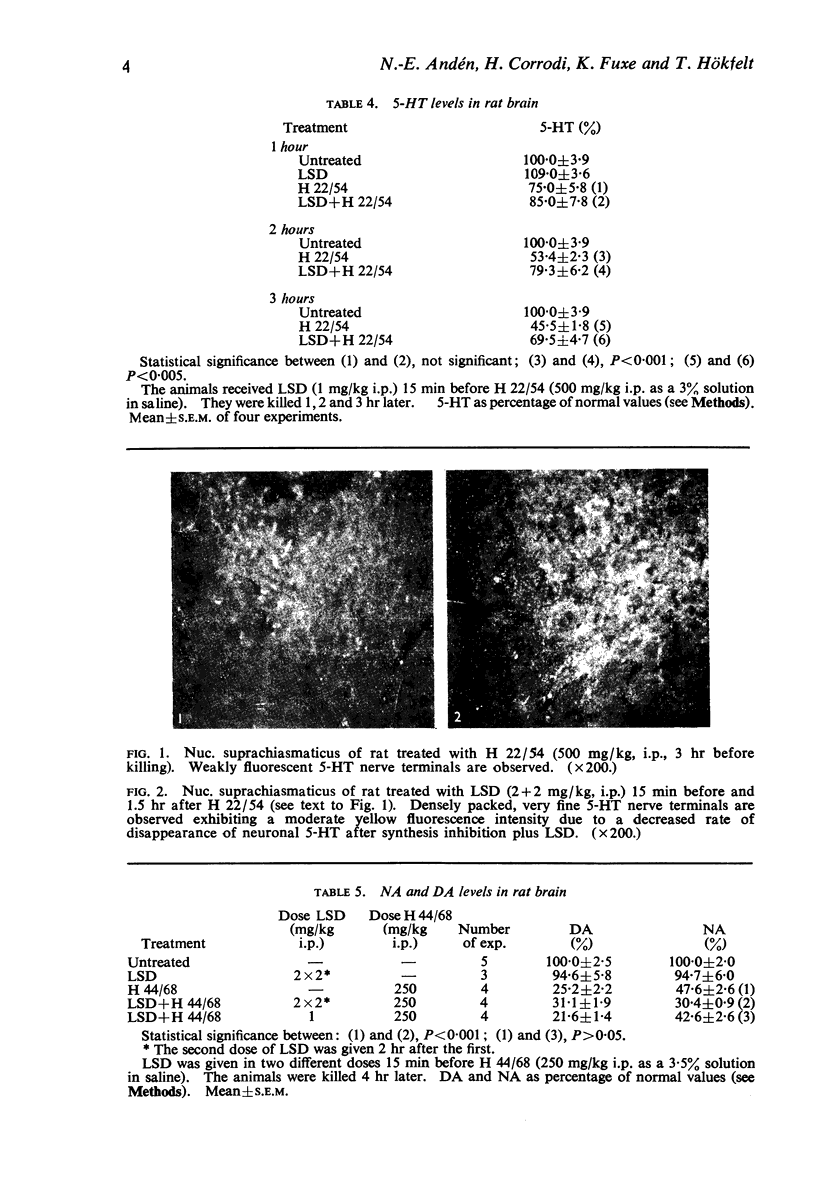
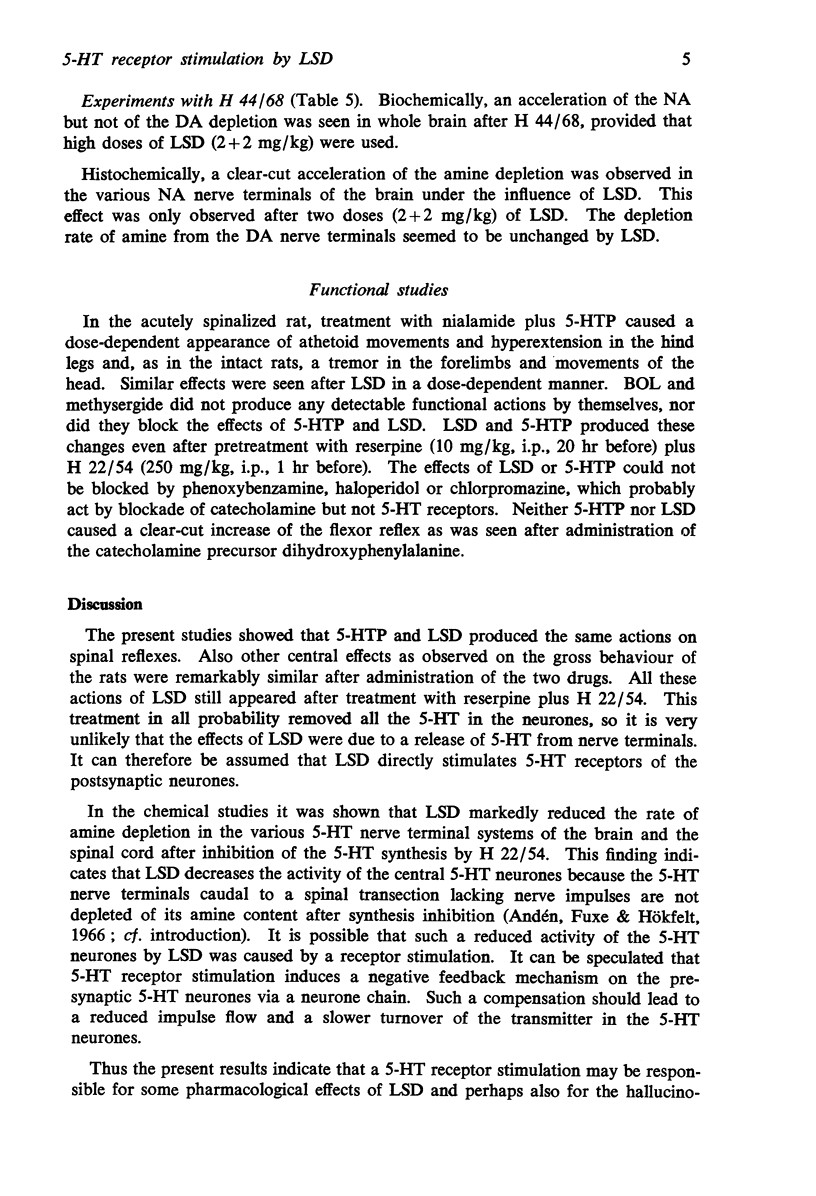
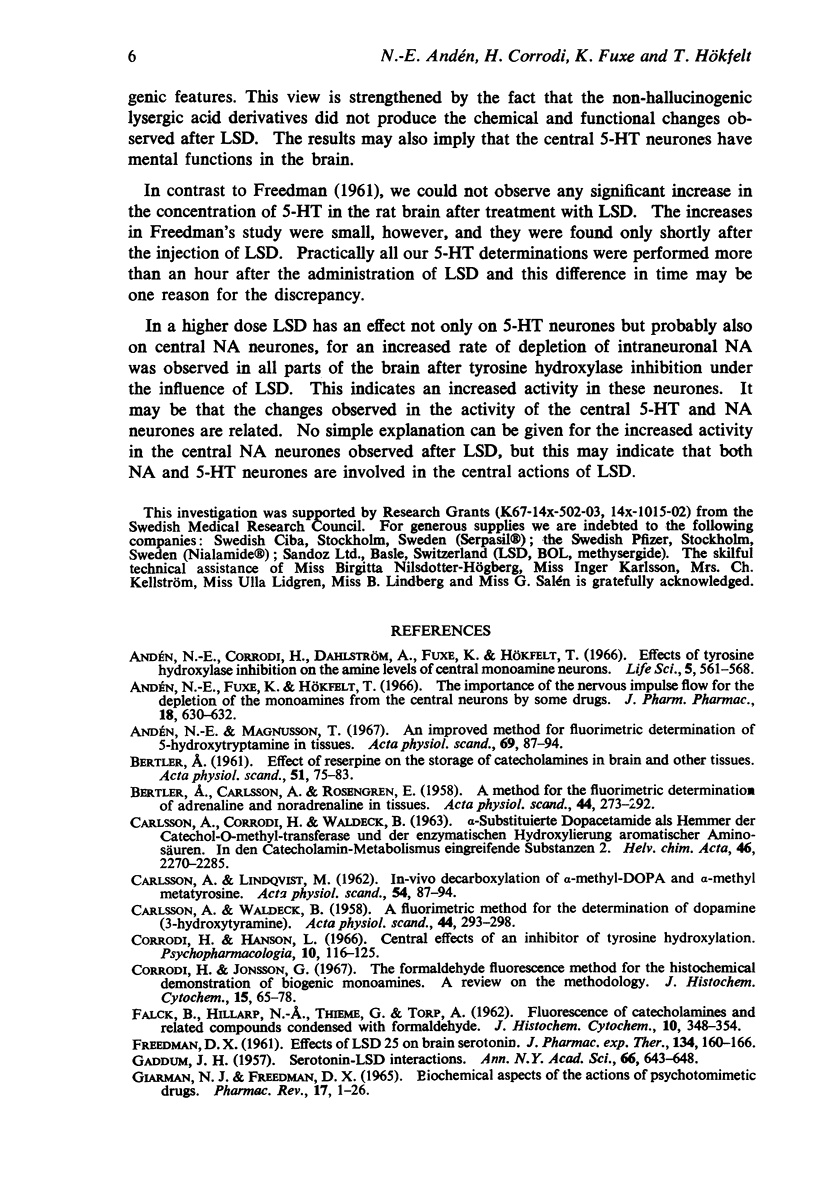
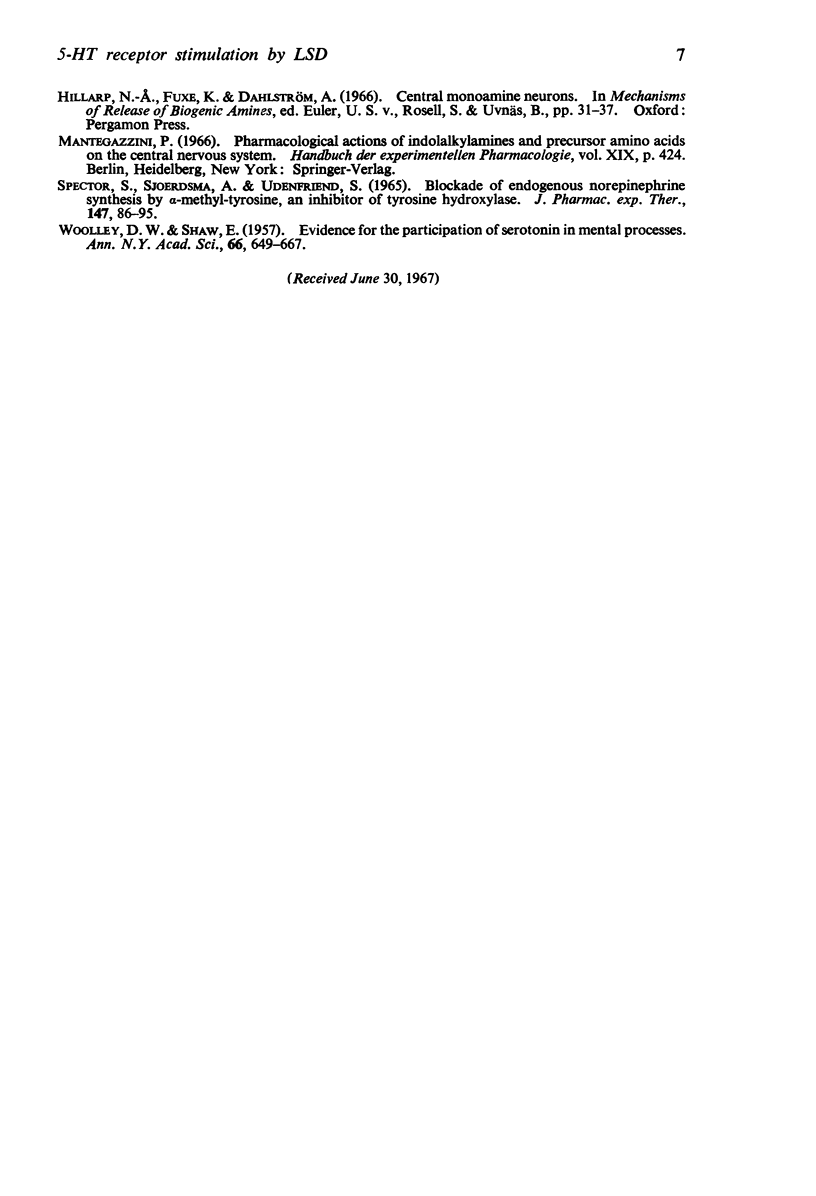
Images in this article
Selected References
These references are in PubMed. This may not be the complete list of references from this article.
- Andén N. E., Fuxe F., Hökfelt T. The importance of the nervous impulse flow for the depletion of the monoamines from central neurones by some drugs. J Pharm Pharmacol. 1966 Sep;18(9):630–632. doi: 10.1111/j.2042-7158.1966.tb07949.x. [DOI] [PubMed] [Google Scholar]
- Andén N. E., Magnusson T. An improved method for the fluorimetric determination of 5-hydroxytryptamine in tissues. Acta Physiol Scand. 1967 Jan-Feb;69(1):87–94. doi: 10.1111/j.1748-1716.1967.tb03493.x. [DOI] [PubMed] [Google Scholar]
- BERTLER A., CARLSSON A., ROSENGREN E. A method for the fluorimetric determination of adrenaline and noradrenaline in tissues. Acta Physiol Scand. 1958 Dec 15;44(3-4):273–292. doi: 10.1111/j.1748-1716.1958.tb01627.x. [DOI] [PubMed] [Google Scholar]
- CARLSSON A., LINDQVIST M. In-vivo decarboxylation of alpha-methyl DOPA and alpha-methyl metatyrosine. Acta Physiol Scand. 1962 Jan;54:87–94. doi: 10.1111/j.1748-1716.1962.tb02331.x. [DOI] [PubMed] [Google Scholar]
- CARLSSON A., WALDECK B. A fluorimetric method for the determination of dopamine (3-hydroxytyramine). Acta Physiol Scand. 1958 Dec 15;44(3-4):293–298. doi: 10.1111/j.1748-1716.1958.tb01628.x. [DOI] [PubMed] [Google Scholar]
- Corrodi H., Hanson L. C. Central effects of an inhibitor of tyrosine hydroxylation. Psychopharmacologia. 1966;10(2):116–125. doi: 10.1007/BF00455973. [DOI] [PubMed] [Google Scholar]
- FREEDMAN D. X. Effects of LSD-25 on brain serotonin. J Pharmacol Exp Ther. 1961 Nov;134:160–166. [PubMed] [Google Scholar]
- GADDUM J. H. Serotonin-LSD interactions. Ann N Y Acad Sci. 1957 Mar 14;66(3):643-7; discussion, 647-8. doi: 10.1111/j.1749-6632.1957.tb40754.x. [DOI] [PubMed] [Google Scholar]
- GIARMAN N. J., FREEDMAN D. X. BIOCHEMICAL ASPECTS OF THE ACTIONS OF PSYCHOTOMIMETIC DRUGS. Pharmacol Rev. 1965 Mar;17:1–25. [PubMed] [Google Scholar]
- SPECTOR S., SJOERDSMA A., UDENFRIEND S. BLOCKADE OF ENDOGENOUS NOREPINEPHRINE SYNTHESIS BY ALPHA-METHYL-TYROSINE, AN INHIBITOR OF TYROSINE HYDROXYLASE. J Pharmacol Exp Ther. 1965 Jan;147:86–95. [PubMed] [Google Scholar]
- WOOLLEY D. W., SHAW E. N. Evidence for the participation of serotonin in mental processes. Ann N Y Acad Sci. 1957 Mar 14;66(3):649-65; discussion, 665-7. doi: 10.1111/j.1749-6632.1957.tb40755.x. [DOI] [PubMed] [Google Scholar]




